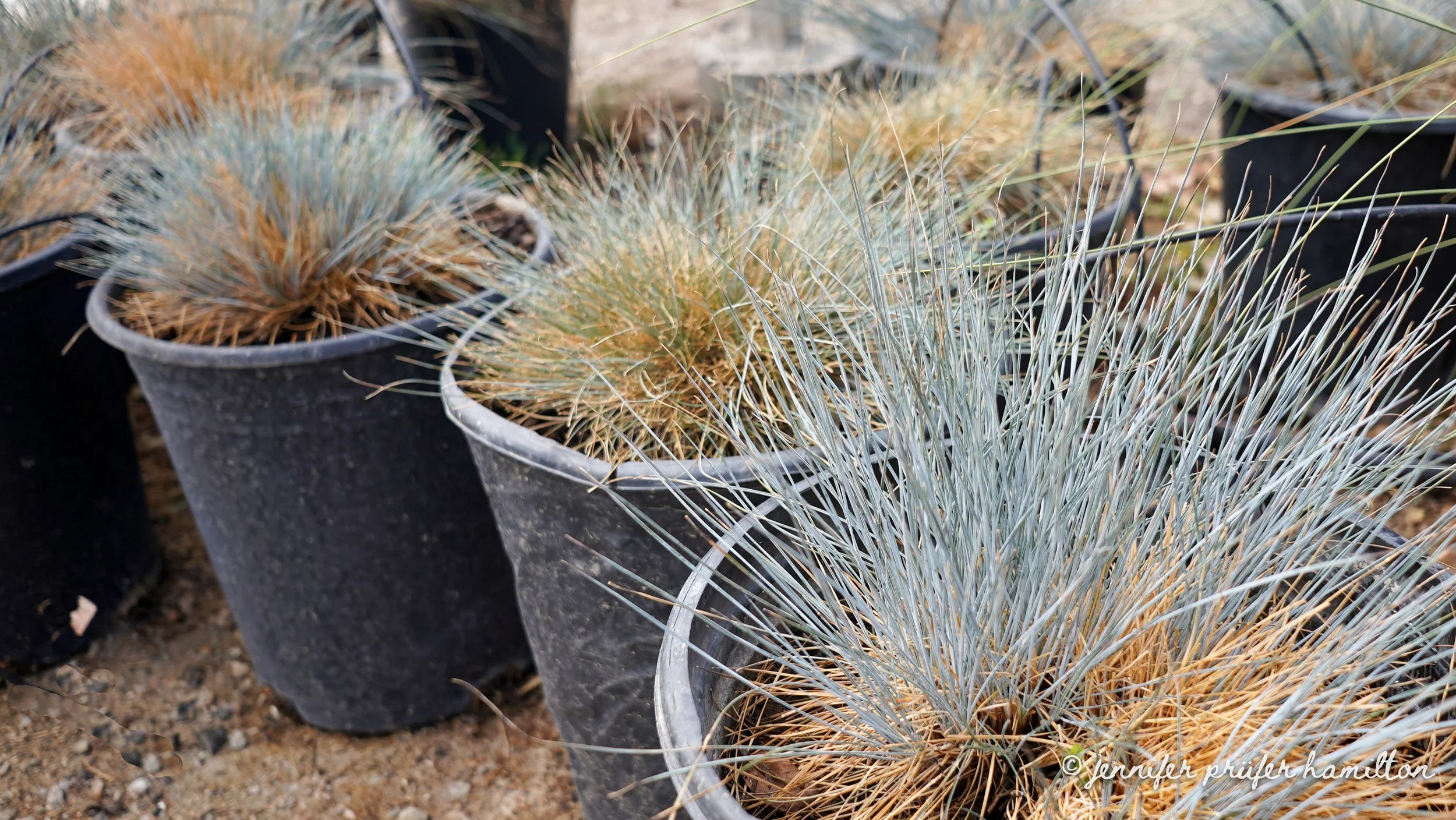Blue Fescue
Blue fescue is a distinctive ornamental ground cover that hails from Europe.
Its botanical name is Festuca glauca. Festuca means “grass.” And glauca means “glaucous,” pointing to the striking blue-green color of the grass.
Botanical name: Festuca glauca
Other names: Common blue fescue
Blue fescue for sale at the nursery
TABLE OF CONTENTS
Blue Fescue Appearance
Blue fescue is a low-growing ground cover that reaches about 1 foot in height and width.
This ornamental grass is best known for its striking blue leaves that are tall and thin. They grow outwards from the center, forming clumps. In some regions with mild winters, they keep their blue-green color year round. In other regions with cooler weather, they turn brown and become dormant in the winter.
From spring to summer, blue fescue grows tall flower stalks with yellow-green flowers that turn into tan seed pods.
Blue Fescue Landscaping Tips
Blue fescue performs best in regions that have mild to cool weather. In the Coachella Valley, we recommend planting it in cooler areas such as in atriums, near cool water, or regions with high elevation to best preserve its vibrant color.
Drought tolerant. Use to add texture and color interest to desert or Mediterranean gardens.
Use for edging walkways or gardens.
Has a short lifespan of around 3 years, but grows new clumps and reseeds readily. Requires re-division to keep the clumps blue and vibrant.
Blooming blue fescue
Blue Fescue Origin
Blue fescue is from regions with mild to cool winters in Western and Southern Europe.
Blue Fescue Care
Soil: Loose, well-draining soil that is moderately fertile.
Temperature: Performs best with low winter temperatures from -20 degrees to 20 degrees Fahrenheit.
Water: Requires moderate watering. Allow the soil to dry out between waterings.
Sun: Full sun. Partial shade in the Palm Springs region.
Blue Fescue Problems
Pests: Blue fescue has minimal pests. Fungal diseases include root rot, dry rot, and harsh weather conditions.
Signs of overwatering: Drooping, squishy texture, browning leaves
Signs of too little water: Shriveled leaves, leaf fall, browning leaves
Signs of too much sun: Burning, fading leaves
Signs of too little sun: Etiolation, discoloration
Blue Fescue Propagation
To propagate blue fescue, divide up the clumps and relocate them.
FAQ
How much does Blue Fescue cost?
At our nursery, blue fescue costs $10 for a 1-gallon container and $20 for a 5-gallon container.
Prices are subject to change. Please contact us for the most up-to-date information on pricing. We may have larger sizes available. We provide installation services locally at a separate cost.
Does blue fescue like full sun?
In USDA zones 4-8, plant in full sun. In Palm Springs region, plant in partial shade.
Should blue fescue be cut back?
Cutting back blue fescue in late winter will help it look blue and vibrant quickly when it regrows. We recommend cutting back about a third of its original height.
Summary
| SIZE (H X W) | 1 feet x 1 feet |
|---|---|
| FLOWER COLOR | Yellow |
| FLOWER SEASON | Spring to Summer |
| EXPOSURE | Full Sun to Partial Sun |
| WATER | Moderate |
| GROWTH RATE | Moderate |
| HARDINESS | -20º F, USDA Zone 4 |
| PRUNING | As Needed |

